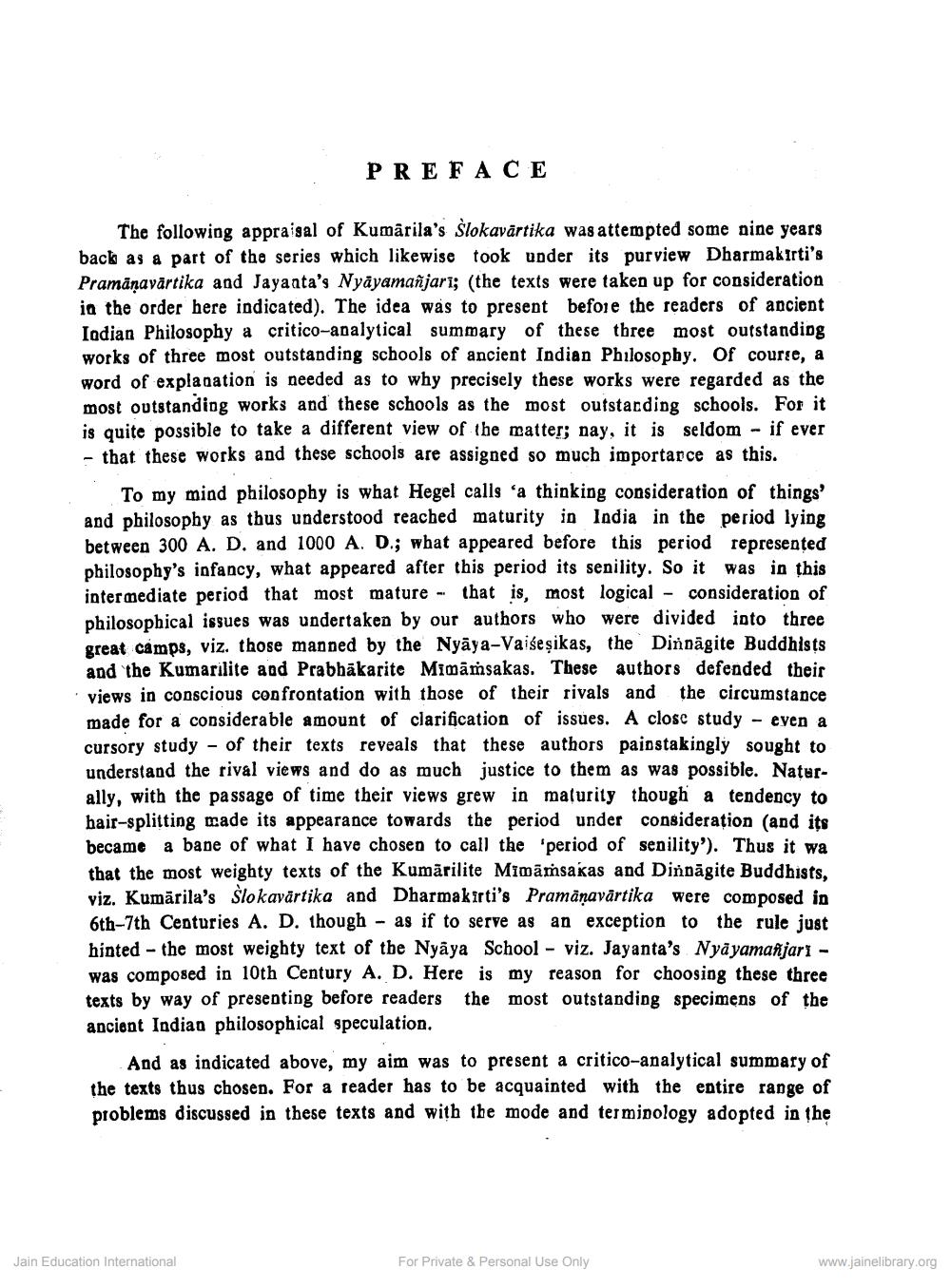________________
PRE FACE
The following appraisal of Kumarila's Šlokavārtika was attempted some nine years back as a part of the series which likewise took under its purview Dharmakirti's Pramāņavārtika and Jayaata's Nyāyamañjari; (the texts were taken up for consideration in the order here indicated). The idea was to present before the readers of ancient Indian Philosophy a critico-analytical summary of these three most outstanding works of three most outstanding schools of ancient Indian Philosophy. Of course, a word of explanation is needed as to why precisely these works were regarded as the most outstanding works and these schools as the most outstanding schools. For it is quite possible to take a different view of the matter; nay, it is seldom - if ever - that these works and these schools are assigned so much importance as this.
To my mind philosophy is what Hegel calls 'a thinking consideration of things' and philosophy as thus understood reached maturity in India in the period lying between 300 A. D. and 1000 A. D.; what appeared before this period represented philosophy's infancy, what appeared after this period its senility. So it was in this intermediate period that most mature - that is, most logical - consideration of philosophical issues was undertaken by our authors who were divided into three great camps, viz. those manned by the Nyāya-Vaiseșikas, the Dinnägite Buddhists and the Kumarilite and Prabhākarite Mimāṁsakas. These authors defended their views in conscious confrontation with those of their rivals and the circumstance made for a considerable amount of clarification of issues. A closc study - even a cursory study - of their texts reveals that these authors painstakingly sought to understand the rival views and do as much justice to them as was possible. Naturally, with the passage of time their views grew in maturity though a tendency to hair-splitting made its appearance towards the period under consideration (and its became a bape of what I have chosen to call the period of senility'). Thus it wa that the most weighty texts of the Kumārilite Mimāṁsakas and Dinnägite Buddhists, yiz. Kumārila's Slokavārtika and Dharmakirti's Pramanavārtika were composed in 6th-7th Centuries A. D. though - as if to serve as an exception to the rule just hinted - the most weighty text of the Nyāya School - viz. Jayanta's Nyāyamanjari - was composed in 10th Century A. D. Here is my reason for choosing these three texts by way of presenting before readers the most outstanding specimens of the anciont Indian philosophical speculation.
And as indicated above, my aim was to present a critico-analytical summary of the texts thus chosen. For a reader has to be acquainted with the entire range of problems discussed in these texts and with the mode and terminology adopted in the
Jain Education International
For Private & Personal Use Only
www.jainelibrary.org




